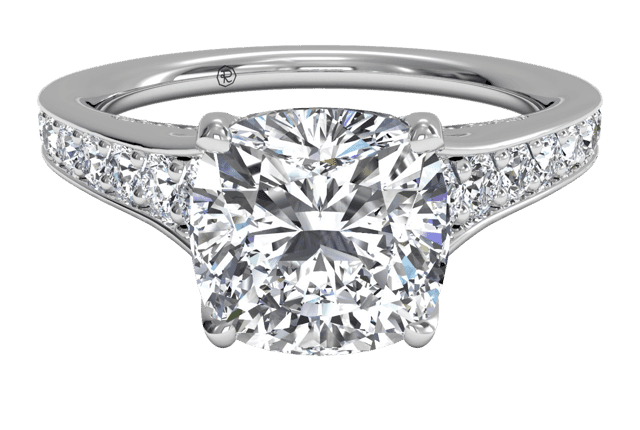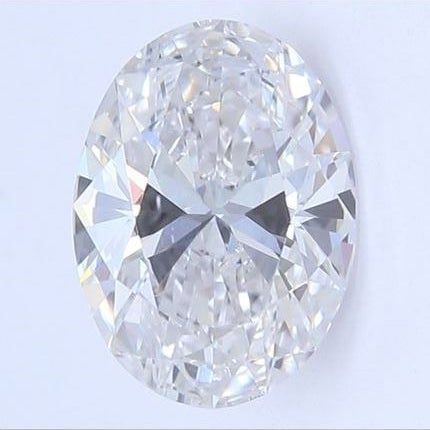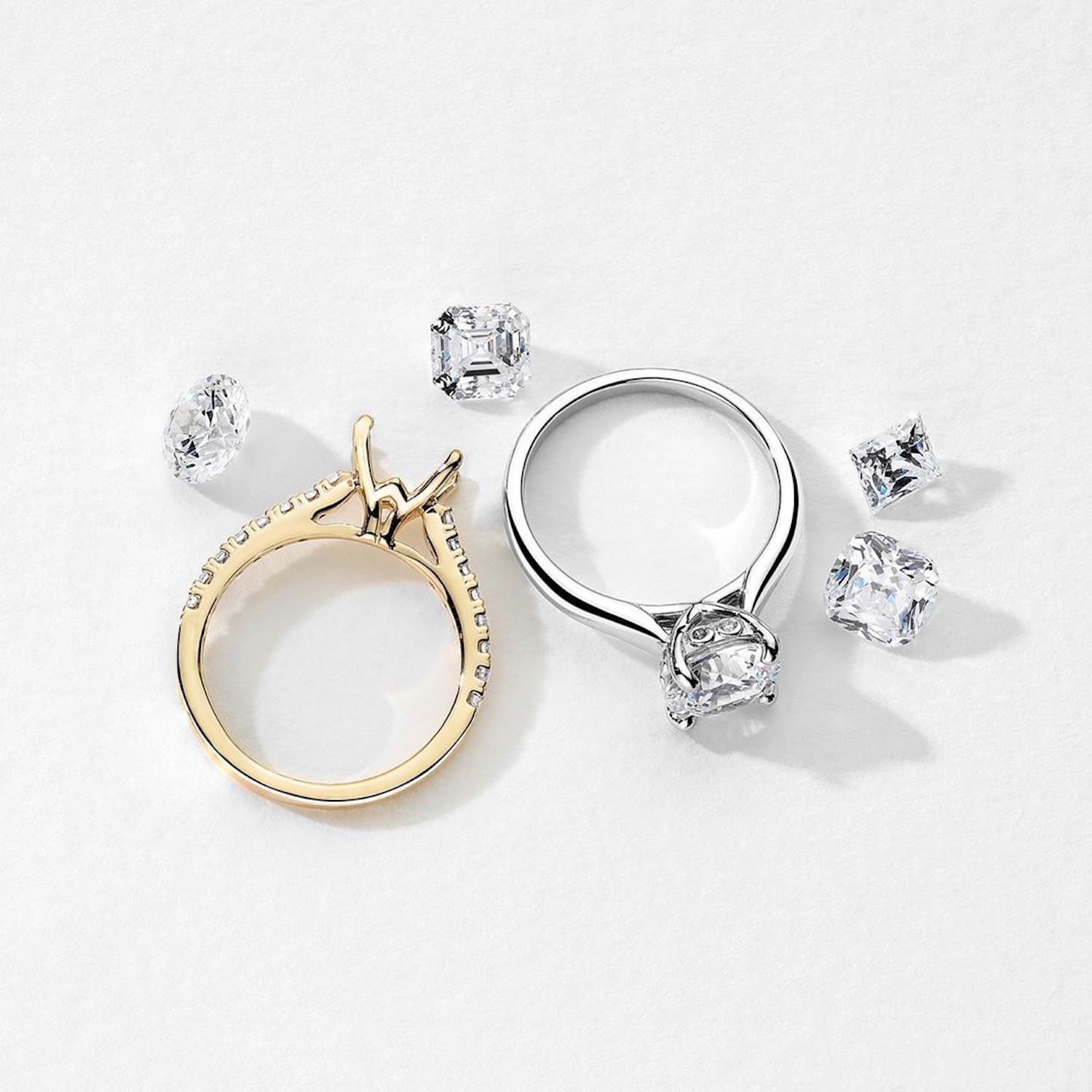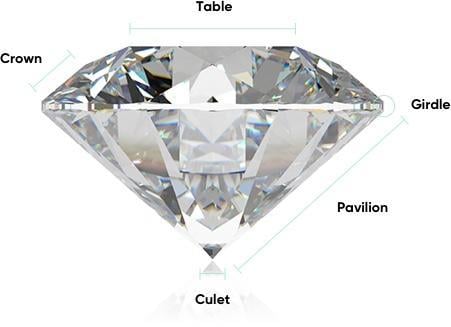The Difference Between Diamonds and Lab Diamonds

When the topic of lab-grown diamonds comes up, the first question that often arises is—Are lab-grown diamonds real diamonds? And the answer is always a resounding, Yes, they are! Lab-grown and earth-grown diamonds are identical in chemical composition, structure, and brilliance to their earth-grown counterparts. The key defining difference between the two is their origin. In recent years, lab-grown diamonds have dramatically surged in popularity due to being more affordable than earth diamonds while offering the same quality, durability, and beauty at a more reasonable price. In addition to being more cost-effective, lab-grown diamonds are the most assured way to avoid conflict diamonds are more environmentally sustainable to boot. Although they are alike in every way except their source, the way they are produced and their histories, or lack thereof, play a significant role in determining whether a person chooses a lab-grown or earth-grown diamond. With this in mind, we will delve into those factors and examine what each represents.
How Do Earth-Grown Diamonds Form? Do They Really Come From Coal?
Perhaps one of the biggest misconceptions about earth-grown diamonds is that they form from coal under pressure—false! The truth is that they are composed of pure, crystalized carbon formed when the earth's deep carbon deposits are exposed to extreme heat and pressure. Under these intense circumstances, the carbon atoms undergo crystallization, leading to the emergence of diamonds, which takes between 1 billion and 3.3 billion years to develop. The phenomenal conditions that give rise to diamonds occur at significant depths between 90 and 125 miles below the earth's surface, where temperatures range between 1,652° to 2,372° Fahrenheit and pressures reach up to 50,000 times that of the atmosphere at the surface. Scientists believe that back in the earth’s ancient history, an exceptionally powerful volcanic eruption that far exceeded anything observed in modern times transported diamonds already in the upper mantle to the surface, which became embedded within the solidified mass of volcanic material. Currently, natural diamonds are extracted from various regions worldwide, with Botswana, South Africa, Zimbabwe, Angola, The Democratic Republic of Congo, Canada, Russia, and Australia being some of the significant producers of earth-grown diamonds. Unfortunately, natural diamonds have been subject to a negative reputation over the years since some diamonds have been mined in war zones and have been used to finance conflict and human rights abuses. To prevent conflict diamonds, as they are often called, from entering the mainstream rough diamond market, The Kimberley Process Certification Scheme was established by United Nations General Assembly Resolution in 2003. The Kimberley Process aims to eliminate human rights abuses in the diamond mining industry and promote environmental safety measures by regulating the trade of rough diamonds through supply chain tracking. While the Kimberley Process has ensured that nearly 99 percent of earth-grown diamonds are free from conflict, it is still crucial to ask your jeweler for the diamond's System of Warranties statement to ensure it has been sourced ethically and is conflict-free.
How Are Lab-Grown Diamonds Produced? Are They a Better Choice?
Lab-grown diamonds, also known as synthetic diamonds or cultured diamonds, are created in a laboratory setting using advanced technology that precisely replicates the conditions under which natural diamonds form. These diamonds develop from a tiny diamond seed placed in a high-pressure, high-temperature environment where it grows over time. In 2018, the Federal Trade Commission even revised its jewelry guidelines to combat deceptive marketing practices in the jewelry industry. The revised guidelines stipulate that "a diamond is a diamond," whether it is grown in a laboratory or mined from the earth. One of the primary advantages of lab-grown diamonds is that they are much more affordable than natural diamonds while offering comparable quality. In addition, lab-grown diamonds are considered more ethical because they do not involve the potential human rights abuses and environmental destruction associated with traditional diamond mining. Nowadays, conflict diamonds are uncommon, but even with the Kimberley Process in place, buying a lab diamond will still assure the buyer that their diamond is ethically sourced and environmentally sustainable. Lab-grown diamonds have gained popularity among eco-conscious couples due to their sustainability, as they do not involve any mining processes in their production. Unlike traditional diamond mining, which can lead to ecological damage, such as massive soil displacement, shoreline alterations, and habitat destruction, lab-grown diamonds offer a greener alternative. Diamond mining also leads to soil, water, and air pollution, particularly in areas where clean water is scarce. Energy sources like diesel fuel, electricity, and hydrocarbons contribute to greenhouse gas emissions, smog, and climate change. Consumers can help preserve forests, watersheds, and other natural habitats by choosing lab-grown diamond jewelry. Another advantage of lab-grown diamonds is that they are often of higher quality than natural diamonds. Since they are grown under controlled conditions, lab-grown diamonds are more consistent in regard to color and clarity, and they often have fewer imperfections than natural diamonds.
If They Are Both Essentially the Same, Which One Should I Choose?
Choosing between a natural diamond and a lab-grown diamond ultimately comes down to personal preference and budget. If you are looking for a rare stone with a primordial history and are willing to pay a premium price, a natural diamond may be the right choice. However, if you are looking for an affordable, high-quality diamond that is more ethical and environmentally friendly while embodying the same brilliance and durability of an earth-grown stone, a lab-grown diamond may be your best option.
All Ritani earth-grown diamonds are certified by the AGS or GIA—the world’s most respected independent grading labs. Ritani lab-grown diamonds are certified by International Gemological Institute (IGI,) the most acclaimed independent lab diamond grading laboratory. If you need assistance selecting your ideal diamond, contact us at 1-888-9RITANI or [email protected].


